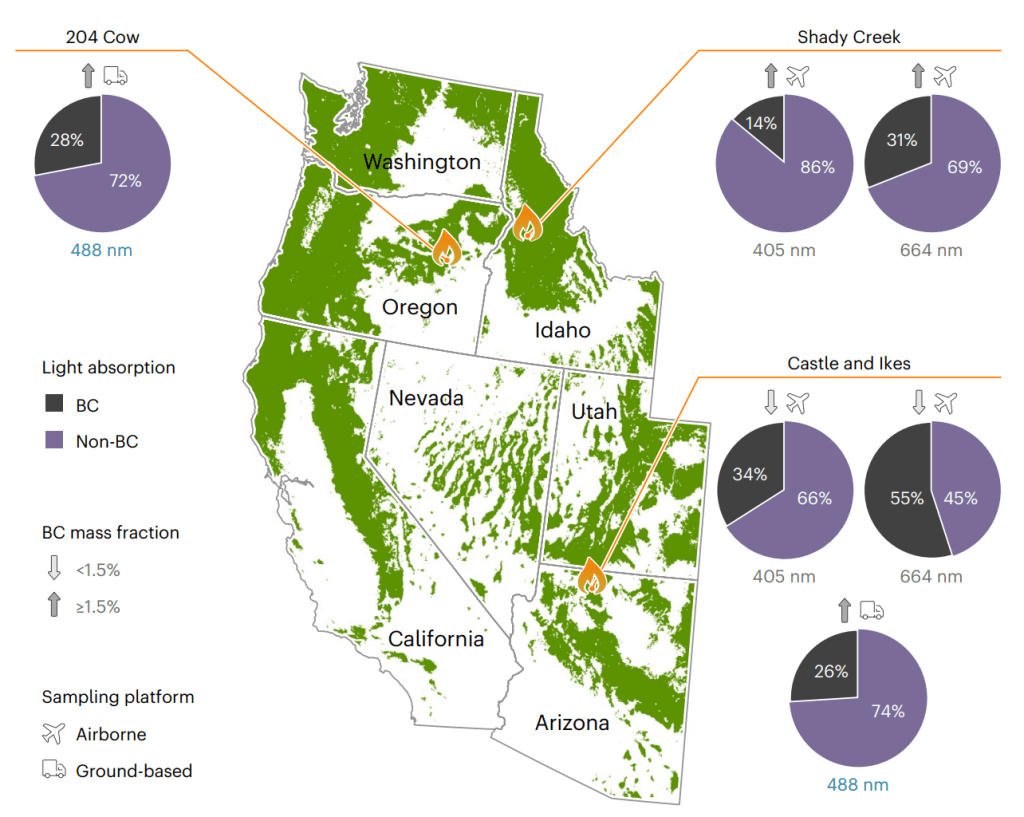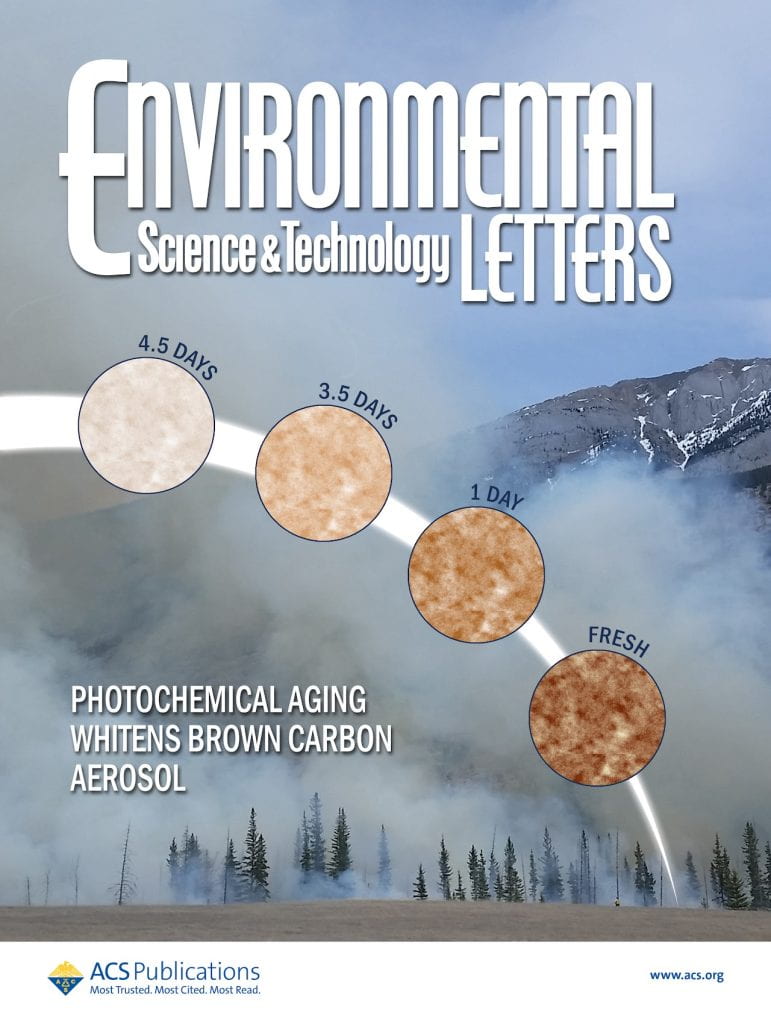Our lab actively participates in field campaigns to measure the optical properties of atmospheric brown carbon from wildfires, biomass burnings, and industrial emissions and collects particle samples for offline analyses on their refractive indices, morphologies, and homogeneities. In addition to field studies, we also investigate optical and physical properties of biomass burning aerosols from the combustion of different types of biomass fuels under controlled laboratory conditions.

Dr. Chakrabarty’s group was the one of the first to show that the smoldering phase of combustion, which emits 70% of total carbonaceous particles in the atmosphere from wildfires, produces primary light absorbing organic aerosol (a.k.a. tar balls). Over the years, his group has comprehensively characterized the spectral refractive indices, optical properties, and physicochemical properties of these aerosols emitted from different parts of the world (e.g., boreal, tropics). More recently, his group has shown that (i) the imaginary refractive index (corresponding to absorption) of these particles could be universally modeled using the classical Kramers-Kronig Dispersion relationship for a damped harmonic oscillator, and (ii) Atmospheric photo-oxidation (aging) of these aerosols bleach/diminishes their absorptive characteristics beyond 3.5 days of residence time.

Global Community Impact: The wealth of datasets generated on Brown Carbon microphysical and optical properties currently serve as “look up tables” for the satellite retrieval algorithm and climate modeling communities. For example, his brown carbon experimental datasets are currently being integrated in JPL’s Airborne Multiangle SpectroPolarimetric Imager’s (AirMSPI) retrieval algorithms. NASA’s OMI satellite is also in the process of incorporating carbon dataset into the latest version of their algorithm. Dr. Chakrabarty is working with the science team members of NASA’s Plankton, Aerosol, Clouds, ocean Ecosystem (PACE) mission for for application of his parameterizations in the PACE Ocean Color Instrument (OCI) and/or possibly a PACE Multi-Angle Polarimeter (MAP) for aerosol absorption characterization and correction. In addition, Geos-Chem and MOSAIC models are incorporating these datasets currently.
Relevant Publications:
- Chakrabarty, R. K., Shetty, N. J., Thind, A. S., Beeler, P., Sumlin, B. J., Zhang, C., Liu, P., Idrobo, J. C., Adachi, K., Wagner, N. L., Schwarz, J. P., Ahern, A., Sedlacek, A. J., III, Lambe, A., Daube, C., Lyu, M., Liu, C., Herndon, S., Onasch, T. B., & Mishra, R. (2023). Shortwave absorption by wildfire smoke dominated by dark brown carbon. In Nature Geoscience (Vol. 16, Issue 8, pp. 683–688). https://doi.org/10.1038/s41561-023-01237-9
- Shetty, N., Liu, P., Liang, Y., Sumlin, B., Daube, C., Herndon, S., Goldstein, A. H., & Chakrabarty, R. K. (2023). Brown carbon absorptivity in fresh wildfire smoke: associations with volatility and chemical compound groups. In Environmental Science: Atmospheres (Vol. 3, Issue 9, pp. 1262–1271). https://doi.org/10.1039/d3ea00067b
- Sumlin, B., Fortner, E., Lambe, A., Shetty, N. J., Daube, C., Liu, P., Majluf, F., Herndon, S., & Chakrabarty, R. K. (2021). Diel cycle impacts on the chemical and light absorption properties of organic carbon aerosol from wildfires in the western United States. Atmospheric Chemistry and Physics (Vol. 21, Issue 15, pp. 11843–11856). https://doi.org/10.5194/acp-21-11843-2021
- Sumlin, B. J., Pandey, A., Walker, M. J., Pattison, R. S., Williams, B. J., & Chakrabarty, R. K. (2017). Atmospheric Photooxidation Diminishes Light Absorption by Primary Brown Carbon Aerosol from Biomass Burning. In Environmental Science & Technology Letters (Vol. 4, Issue 12, pp. 540–545). https://doi.org/10.1021/acs.estlett.7b00393